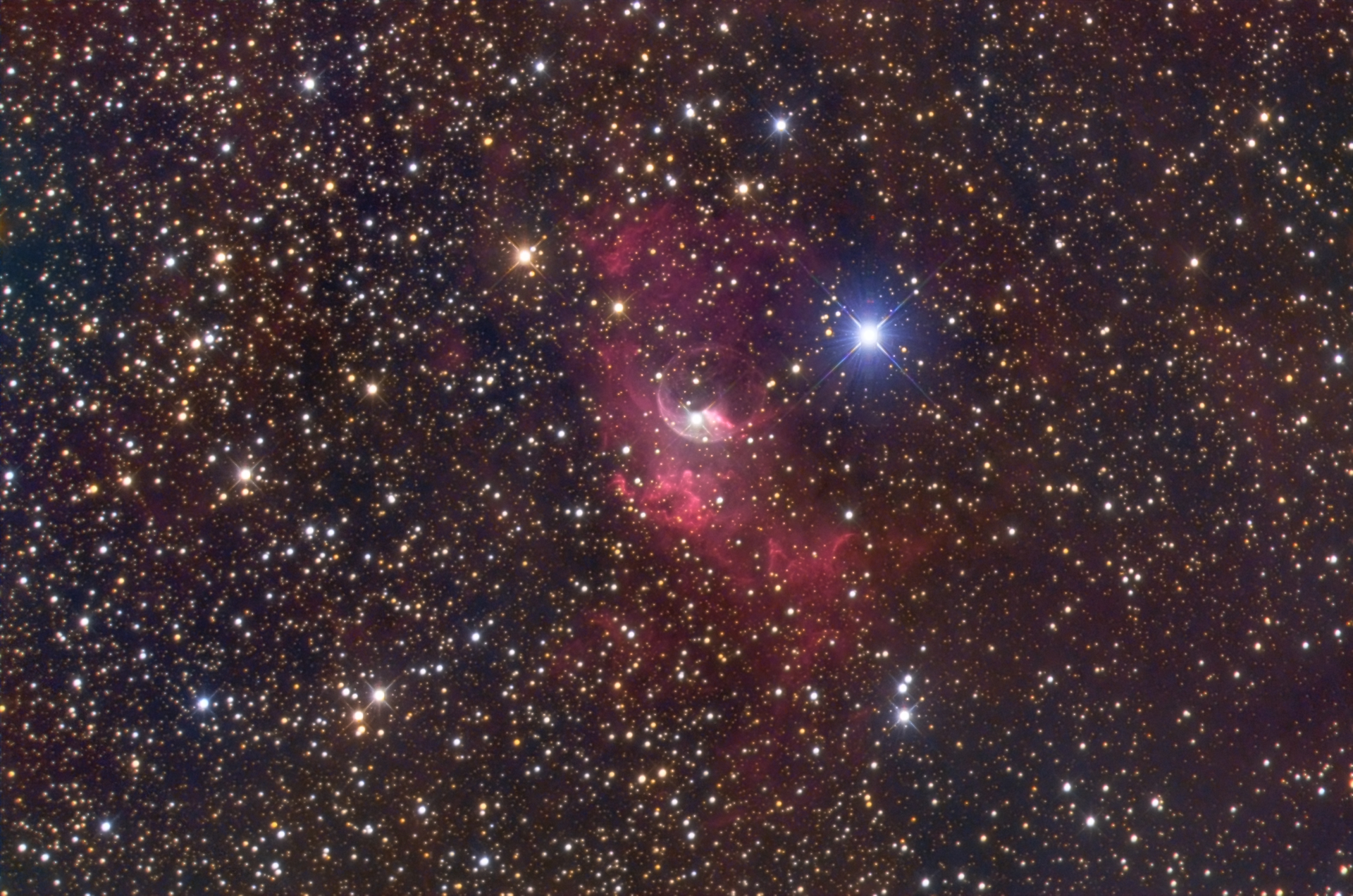This time, taking advantage of the New Moon nights, I went for a relatively easy and widely popular target: the Bubble Nebula, NGC 7635.
Here’s a quote from Wikipedia:
NGC 7635, also called the Bubble Nebula, Sharpless 162, or Caldwell 11, is a H II region emission nebula in the constellation Cassiopeia. It lies close to the direction of the open cluster Messier 52. The “bubble” is created by the stellar wind from a massive hot, 8.7 magnitude young central star, the 15 ± 5 M☉ SAO 20575 (BD+60 2522). The nebula is near a giant molecular cloud which contains the expansion of the bubble nebula while itself being excited by the hot central star, causing it to glow. It was discovered in 1787 by William Herschel. The star SAO 20575 or BD+602522 is thought to have a mass of 10-40 Solar masses.
And this is what APOD has to say about it:
Blown by the wind from a massive star, this interstellar apparition has a surprisingly familiar shape. Cataloged as NGC 7635, it is also known simply as The Bubble Nebula. Although it looks delicate, the 10 light-year diameter bubble offers evidence of violent processes at work. Above and right of the Bubble’s center is a hot, O star, several hundred thousand times more luminous and around 45 times more massive than the Sun. A fierce stellar wind and intense radiation from that star has blasted out the structure of glowing gas against denser material in a surrounding molecular cloud. The intriguing Bubble Nebula lies a mere 11,000 light-years away toward the boastful constellation Cassiopeia.
For my interpretation, I used L, Hα, and RGB filters, for a total integration time of 19 hours.
The image can be seen on AstroBin as well.

